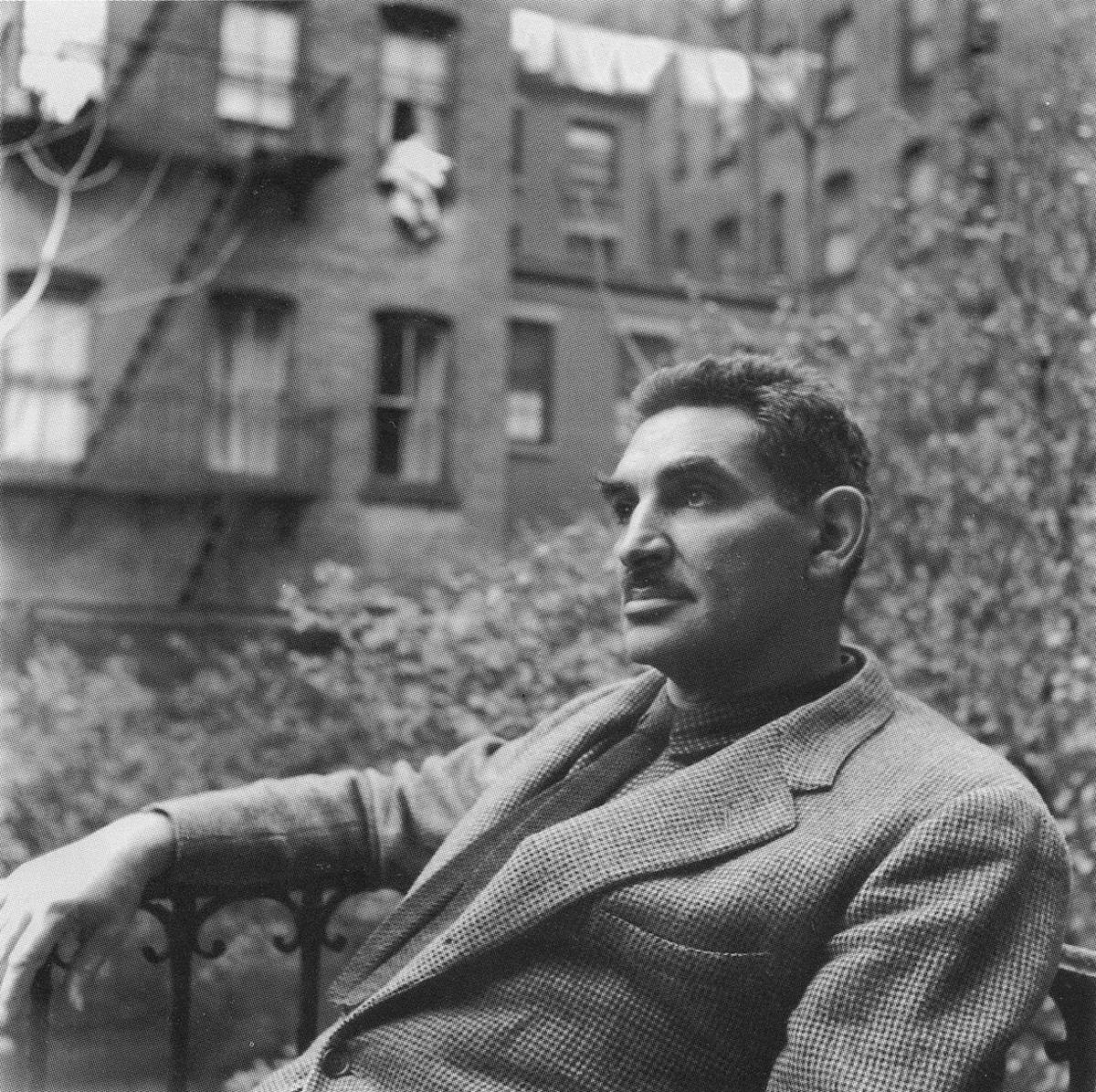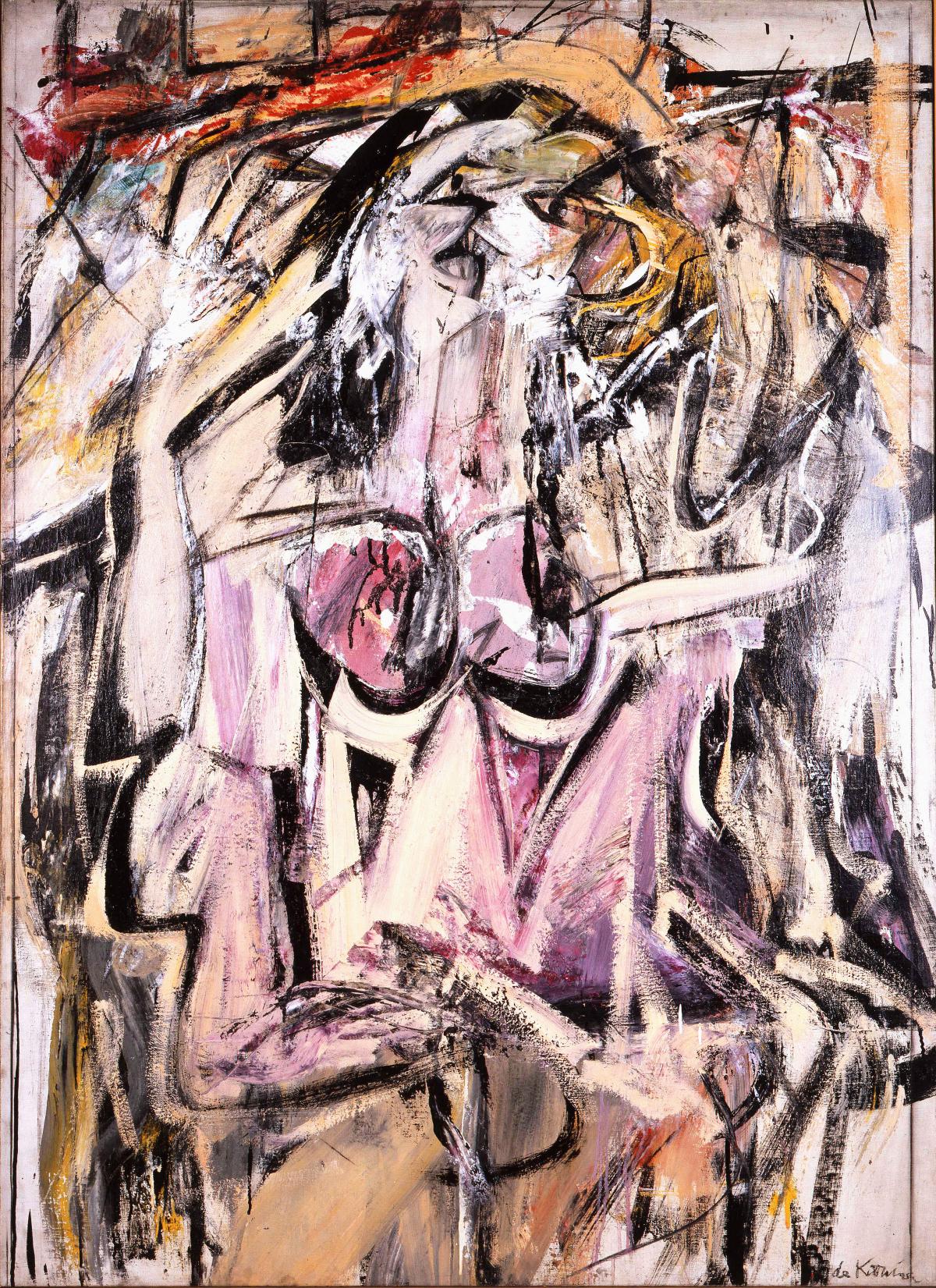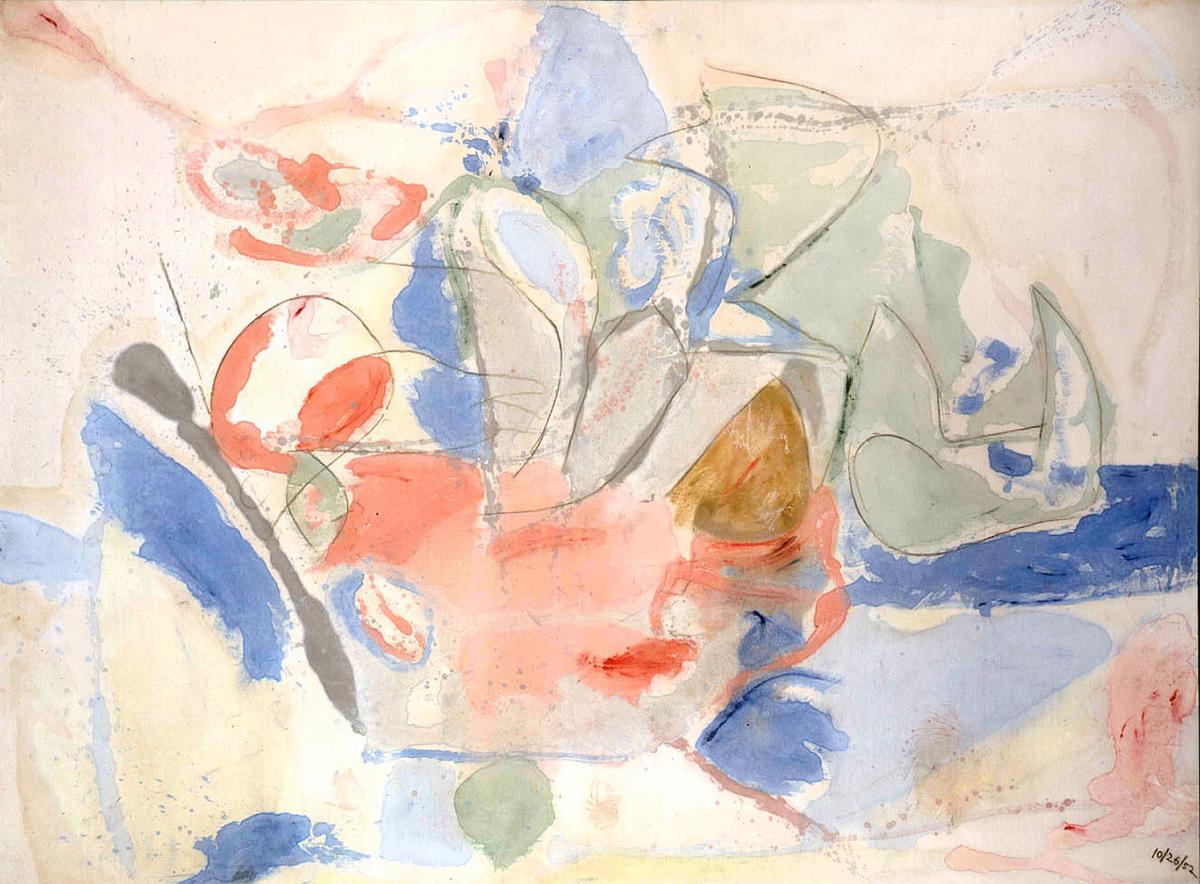What is art criticism today if not a muddied profession? How can we agree what criticism is if we cannot agree what art is? So the critic today contends with an unruly field. Art makes unusual demands on the viewer, and art criticism makes unusual demands on the writer, who must now fill several roles: that of a stock analyst at the art fairs and auction houses; a gossip columnist at the openings; a sports announcer at the museums and galleries; and a lifestyle guru in the popular press.
Compare this with sixty years ago. Modernism has an uncanny ability to break things down and isolate ingredients. Matisse with color, Picasso with form and line—the best modern art is radically fundamental before it is ever fundamentally radical, a distilled purification of art’s first principles. So it comes as little surprise that as American modern art reached its apex in the 1950s through the flowering of Abstract Expressionism, art criticism achieved a glittering purity of its own—a beautiful high criticism perfectly matched to the period of high art.
The writers who defined the parameters of this criticism were Clement Greenberg (1909-1994) and Harold Rosenberg (1906-1978). Greenberg & Rosenberg were like Ali & Frazier. They made up the protagonists in art criticism’s fight of the century—a Grapple in the Big Apple between personal and professional adversaries. It was also, undoubtedly, one of the few fights in art criticism to make it into the record books. Yet as the passions of their engagement have dissipated, and the art world has moved on to largely financial concerns, the Greenberg-Rosenberg rivalry has, in hindsight, come to seem of a piece. I say this as someone who has always been more in the Greenberg camp.
Greenberg and Rosenberg were diametrically opposed in their interpretations of Abstract Expressionism, but each interpretation was correct in its way. Their theories were not mutually exclusive, but instead opposite ends of a kind of dialectic. Through two forceful positions argued before the backdrop of Abstract Expressionism, in opposing language, together they laid out the full definition of modern art.
Apollo and Dionysus
In The Birth of Tragedy, his youthful interpretation of Greek drama, written in 1872, Friedrich Nietzsche wrote that great classic art was predicated on the balance of Apollonian and Dionysian impulses—“Apollonian” after the sun god Apollo, with his “measured restraint, the freedom from the wilder emotions, that calm of the sculptor god”; and “Dionysian” after Apollo’s brother Dionysus, the god of wine, with “the blissful ecstasy that wells from the innermost depths of man, indeed of nature . . . brought home to us most intimately by the analogy of intoxication.”
“Wherever the Dionysian prevailed,” Nietzsche wrote, “the Apollonian was checked and destroyed. . . . Wherever the first Dionysian onslaught was successfully withstood, the authority and majesty of the Delphic god Apollo exhibited itself as more rigid and menacing than ever.”
Greenberg and Rosenberg were the checks and balances of American abstract art in this Nietzschean definition—Greenberg the Apollonian, Rosenberg the Dionysian. In 1947, Greenberg called for “the development of a bland, large, balanced, Apollonian art . . . in which an intense detachment informs all. Only such an art, resting on rationality . . . can adequately answer contemporary life, found our sensibilities, and, by continuing and vicariously relieving them, remunerate us for those particular and necessary frustrations that ensue from living at the present moment in the history of western civilization.”
And here was the Dionysian Rosenberg, writing in “The American Action Painters,” his most famous essay, in 1952: “At a certain moment, the canvas began to appear to one American painter after another as an arena in which to act—rather than as a space in which to reproduce, re-design, or ’express’ an object. . . . What was to go on the canvas was not a picture but an event.” And more: “The big moment came when it was decided to paint . . . just to PAINT. The gesture on the canvas was a gesture of liberation, from Value-political, esthetic, moral.”
Diverging viewpoints
“Action” versus “detachment,” “liberation from value” versus an art “resting on rationality”—an exhibition now at The Jewish Museum in New York called “Action/Abstraction: Pollock, de Kooning, and American Art, 1940-1976,” organized by Norman Kleeblatt, tracks these two critics and the ideals they represented through the artists they endorsed and the ephemera they left behind.
“Their initial theoretical outlooks were not that dissimilar,” Kleeblatt argues—persuasively, I might add—even though “many observers half a century ago viewed the opposed perspectives of Rosenberg and Greenberg as the only approaches to contemporary art. The two men’s impassioned writings often reduced the issues to either a formalist or an existentialist view, and each thought that his own view would prevail.” Kleeblatt calls this disagreement “the foundational dialectic of the era.” Morris Dickstein, the literary and cultural critic, maintains that Greenberg and Rosenberg “demonstrated the antithetical ways that Modernism would be assimilated to American cultural discussion in the years after World War II.”
In terms of differences, you could see it in their faces. In photographs Rosenberg wears his expression like a mask—a primitive totem neither frowning nor smiling, an angular profile punctuated by a small mustache. In a picture of him looking to the side and up to the sky, we imagine the private reverie of a critic who privileged the subjective, the mythical, and the existential over the material. In his theories Rosenberg was influenced by Jean-Paul Sartre, Albert Camus, and Maurice Merleau-Ponty.
Compare this with Greenberg, who in most photographs pokes and squints and pinches his face. Greenberg, a positivist like Ludwig Wittgenstein, was concerned with materials and purity of form. Influenced by Roger Fry, Walter Pater, and Benedetto Croce, he advocated an “art for art’s sake” of internal laws and formal logic that operated outside of subjective concern. Engaged with the here and now of art, unlike Rosenberg who looked to the beyond, in photographs Greenberg radiates the worries and joys of the real world, his hooded eyes piercing rather than transcendent. “For Greenberg,” writes Kleeblatt, “the true work of art was one that exploited the uniqueness of each medium to express sensation as the essence of experience. The result was the evocation of emotion.” While for Rosenberg, “action painting was the psychic expression of the artist’s being and identity; the artist's creative process operated in the space between art and life. For Rosenberg this intimate and bold means of self-expression encouraged mythical interpretations of the artist’s ambitions.”
In the art of the era, their advocacy split right down the middle. Rosenberg’s man was Willem de Kooning, the classically trained Dutchman who delighted in making a mess in the kitchen of art. Greenberg backed Jackson Pollock. “Greenberg hadn’t created Pollock’s reputation,” Tom Wolfe wrote in his 1975 send-up of modern art, The Painted Word, “but he was its curator, custodian, brass polisher, and repairman, and he was terrific at it.”
Greenberg favored Pollock for the grand scale of his work, which brought painting down from the easel. The innovation of the drip technique furthermore detached Pollock from the canvas and flattened the image into a scrim, removing any sense of illusion and acknowledging the properties of the painting’s internal logic. Rosenberg, however, saw de Kooning as the ultimate psychic actor on canvas, an artist who would paint and scrape and repaint and whose work was a dynamic recording of artistic action. The two artists formed something of their own dialectic. In the early 1950s, with the drip, Pollock used drawing to create a painting. De Kooning, meanwhile, used painting to arrive at drawing-like cartoons.
Similar paths
See these artists together today and you probably notice the similarities before you see the differences. In fact, before he introduced subject matter into his paintings in the 1950s, de Kooning was an abstractionist admired by Greenberg. When photographs and movies of Pollock’s drip dance emerged in the 1950s, observers took him to be the ultimate Rosenberg action painter. (The critics themselves were not so clear-cut in their advocacy either. Both admired Hans Hofmann and Arshile Gorky, for example.)
The similarities between Greenberg and Rosenberg outweigh the differences. The critic Max Kozloff has written that “a good deal of the underlying agreement between them has been obscured,” and he is right. They were born to immigrant Jewish families in New York just years apart. They rose up through the political world of the 1930s to arrive at a Marxist-influenced aesthetic position that was ardently anti-Stalinist and pro-Trotskyist in the belief that “art can become a strong ally of revolution only in so far as it remains faithful to itself.” In their early years they both wrote for “little magazines” such as Partisan Review, Encounter, and Commentary. They hoped to insulate the high arts from popular culture with similarly influential essays: Greenberg wrote “Avant-Garde and Kitsch” for Partisan Review in 1939. Rosenberg wrote “The Herd of Independent Minds” for Commentary in 1948. And, of course, they both came to Modernism at a particular moment after 1940 to focus on the rise of American abstract painting. They tracked their disagreements through countering essays published over the next twenty years.
Their disputes played out in print through the early 1960s. In “How Art Writing Earns Its Bad Name,” Greenberg called Rosenberg’s “American Action Painters” a “misinterpretation that was also a fatality of nonsense.” In 1963, Rosenberg responded with “The Action Painting: A Decade of Distortion,” arguing that Greenberg’s formalism was an “academic concept” to “normalize” art by focusing on “line, color, form” rather than “politics, sociology, psychology, metaphysics.” Rosenberg accused Greenberg of distorting “fantastically the reality of postwar American art. This distortion is being practiced daily by all who may enjoy its fruits in comfort.” Greenberg assailed Rosenberg for “perversions and abortions of discourse: pseudo-description, pseudo-narrative, pseudo-exposition, pseudo-history, pseudo-philosophy, pseudo-psychology, and—worst of all—pseudo-poetry.” Rosenberg countered: “Formal criticism has consistently buried the emotional, moral, social and metaphysical content of modern art under blueprints of ’achievements’ in handling line, color, and form.” And so on. They even published countering anthologies just years apart: Rosenberg The Tradition of the New in 1959, and Greenberg Art and Culture in 1961.
“One indelible point,” says Kleeblatt, “that emerges from an examination of Greenberg’s and Rosenberg’s writings is that the two men saw clearly and at times even fiercely how much was at stake in their aesthetic and political views.” They were also both Jewish intellectuals who were “outsiders who faced discrimination in American society and in the ’established’ art world,” writes the critic Irving Sandler, “centered as it was in institutionally anti-Semitic museums and universities, they yearned for a brave new socialist world in which ethnic prejudice would disappear. They embraced Modernism, a marginal culture whose world was more open to them as Jews than were ’official’ milieus.”
Each critic published a single essay on the subject of Judaism. Greenberg wrote on “Self-Hatred and Jewish Chauvinism” in 1950, while Rosenberg asked, “Is There a Jewish Art?” in 1966. Greenberg voiced “a Jewish bias toward the abstract, the tendency to conceptualize as much as possible,” while Rosenberg advocated a “self-determined Jew” whose connection with the past “occurs not through his revival of forms which they [the ancestors] created—their doctrines, rituals, institutions—but through his own creative act which they inspire.”
Is there a Jewish art criticism? The art critic Donald Kuspit summed up the answer in this way: “For Rosenberg the American artist always faces a choice between being a true or false self. For Greenberg it is between being an avant-garde or kitsch artist. The essence of the choice is the same: to maintain one’s sacred integrity or to comply with society’s profane demands. The American artist is always in a Jewish situation, trapped between autonomy and assimilation.”
Tiring of the dialectic
What eventually happened to the Greenberg-Rosenberg “family row” is indicative of the fate of culture in the latter half of the past century. It wasn't that one side won out; it was rather that art moved on. The Apollonian-Dionysian dialectic that at one point established the outer limits of art proved ill-equipped at containing and contending with the art of the 1960s and beyond. Both Greenberg and Rosenberg were flummoxed by neo-Dadaism, Pop art, and Minimalism. So art criticism lost its own internal logic. If culture could not agree on a definition of art, it could not disagree on the meanings contained within.
Greenberg went in for a particular drubbing beginning in the 1960s, as his Trotskyism and anti-Stalinism evolved into a codified form of Modernism and pro-Americanism. In 1966, just by example, a performance artist named John Latham organized a monthlong event called “Still and Chew,” in which participants bit off, masticated, and spat out pages of a copy of Art and Culture, which Latham had borrowed from his college library.
“Despite reams of politically savvy writings that condemn Greenberg,” says Kleeblatt, “his formalist theory of Modernism remains a point of departure (and contention) even in postmodern discourse. This is a foundation for some, a brick wall that needs breaking down for others.” Yet while “Greenbergianism” and “Clem” became epithets in the university art history programs in the 1970s (and remain so today), Rosenberg did not receive what might have been an expected boost to his own reputation. At a certain point, the reputations of Greenberg and Rosenberg were only serviceable in the negative—pillars to topple over. Rosenberg, whose criticism was less trenchant than Greenberg's, simply proved to be an easier challenge to overcome.
“A heroic phase of Modernist innovation . . . was soon to come to an end,” writes Morris Dickstein, “once the new became a marketing strategy rather than a life-altering encounter that mattered in its own terms.” What is art criticism today? I can tell you what it's not: Harold Rosenberg and Clement Greenberg. Some might call this progress. I call it a shame.








